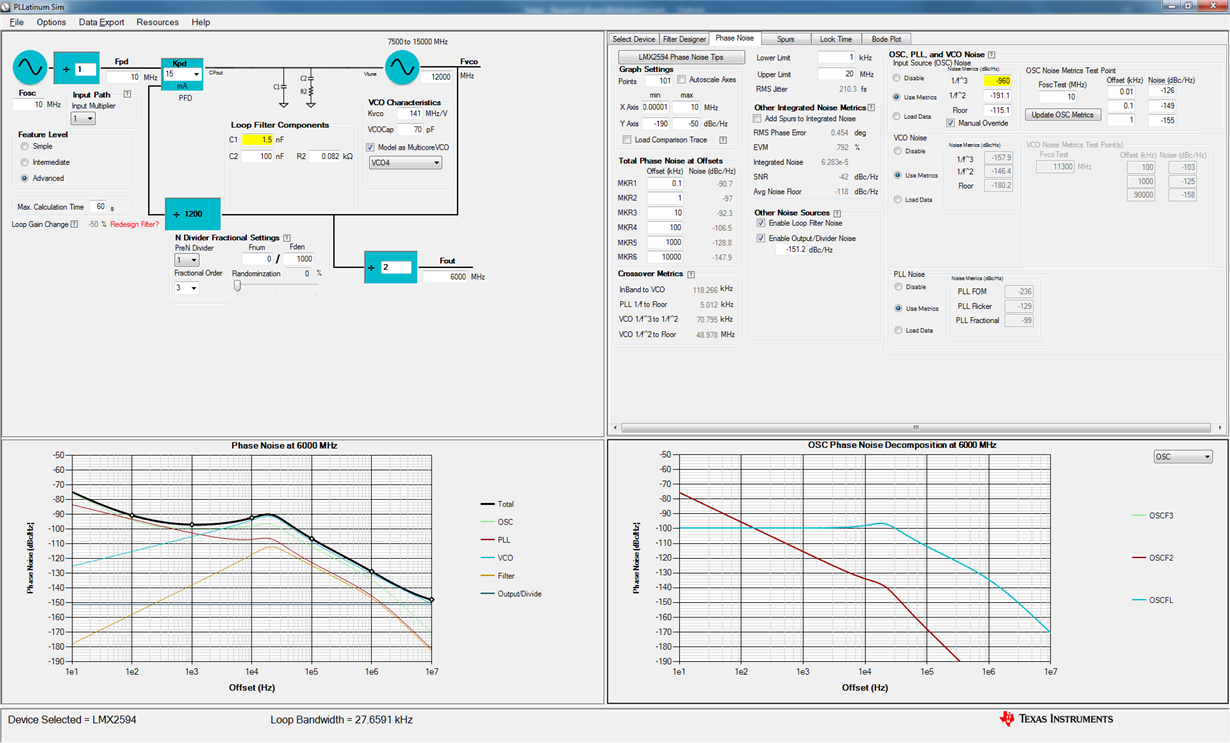Hi, I am having some trouble with the phase noise from the LMX2594 synth.
I am using a 10MHz reference source with Fpd set to 10MHz as well. The output frequency is set to 6GHz.
When I look at the PLLatinum sim predicted phase noise performance I get around -90dBc/Hz at 100Hz offset but once this is implemented on my PCB I only achieve around -70dBc/Hz. See plots below (dark blue trace on the NoiseXT measurement data). As you can see from the plots I have tried numerous phase detector and oscillator frequencies as well as different frequency sources but I have not been able to improve on this phase noise.
Can anybody help me work out why there might be a 20dB degradation in phase noise from the prediction to the measurement?



